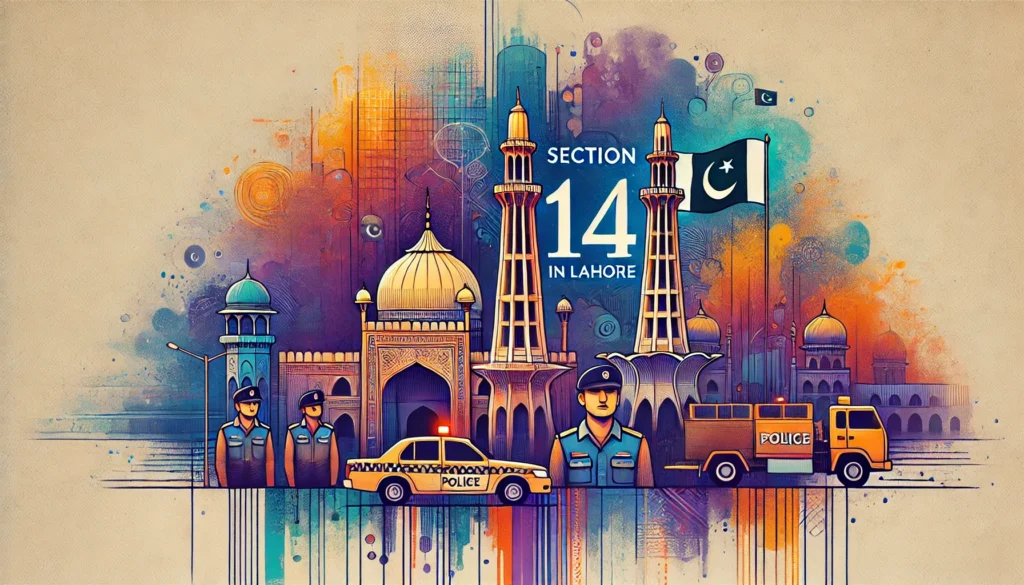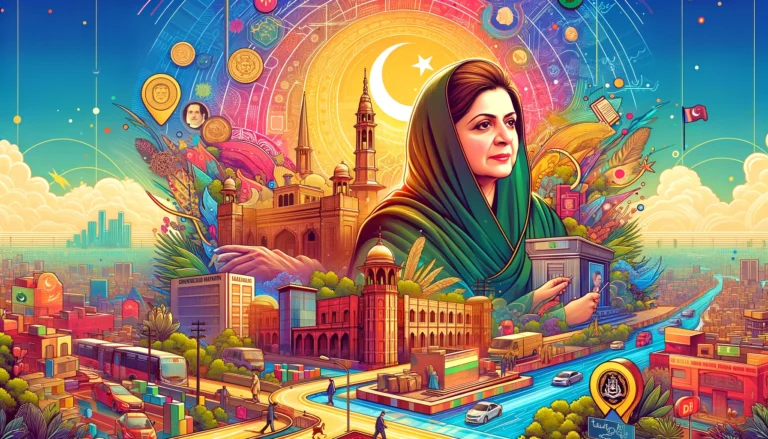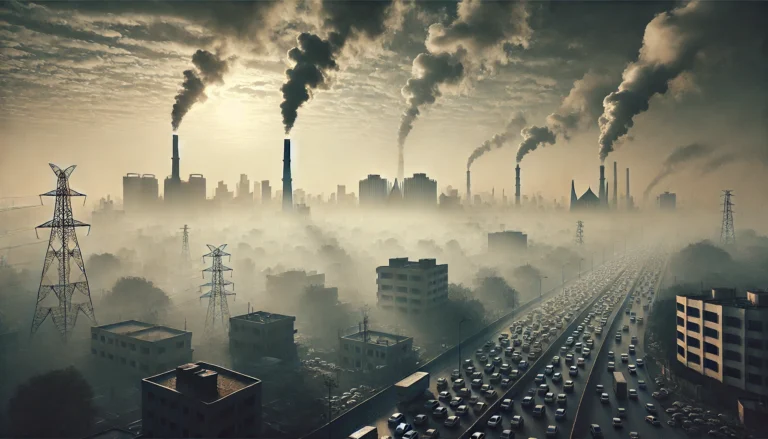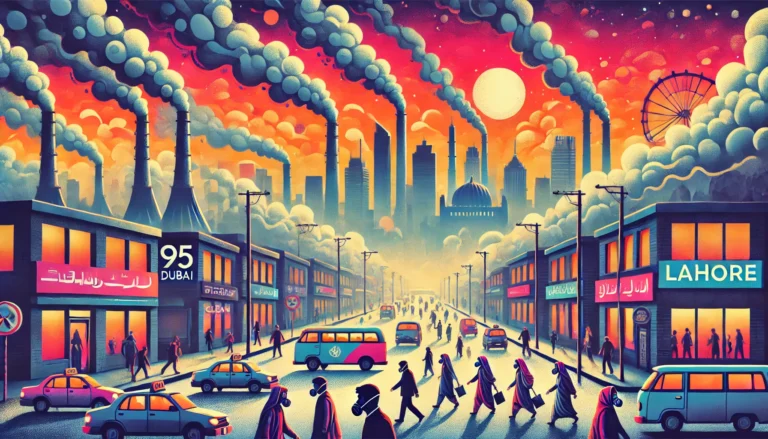Punjab Government Imposes Section 144 in Lahore
With an eye on peace and order in Pakistan’s bustling city of Lahore, the Punjab government has been enforcing Section 144 of the Criminal Procedure Code (CrPC). The decision comes as officials in recent weeks have expressed increasing public safety and civil unrest are prompting authorities to take preemptive measure to disrupt. This article looks into the details of Section 144, how it applies to Lahore’s residents, and the environment within which Section 144 is enforced. Past instances of Section 144 enforcement in Pakistan, the causes for it and its ability to ensure public order will also be being analyzed by us.
What is Section 144 and Why is It Enforced?
Section 144 of the Criminal Procedure Code (CrPC) permits administrative authorities the power to issue orders in cases of nuisance or apprehended danger in an urgent manner. It is commonly enforced to ward off gatherings and public assemblages, or protests which may trouble or cause violence. The most important part of Section 144 is the restriction of public assembly, usually no more than four people, and is meant as a preventative measure to prevent the spread of unrest in delicate settings.
Why now in Lahore?
The Section 144 has recently been imposed in Lahore, which, however, could be indicative of the rising concerns about law and order keeping with the current clamor of political unrest, protests and the security threats. Authorities suggest these are the primary reason, saying public safety needs to be prioritized in Pakistan’s second largest city. Lahore, however, has been a fertile ground for political demonstrations, which, however, may result in groups of people gathering that can go violent.
History of Section 144 in Pakistan
On the other hand, Pakistan is not new with the use of Section 144. It’s been used a few times during times of political instability or heightened security threats over the years. An example of this was during the 2014 sit ins by the supporters of Pakistan Tehreek-e-Insaf (PTI) in Islamabad; wherein the law was enforced to stop the many gatherings on a large scale in Islamabad. It was imposed, however, more recently, as a response to the COVID-19 pandemic to prevent people from gathering in public spaces both to stop the spread of the virus.
The law, however, often just acts as a short term quick fix to keep the chaos in check, and for that reason has become a hot seat topic of debate surrounding civil liberties and freedom of assembly. Section 144 is used by authorities to ensure public safety, critics say, but that leaves it open to the misused power to cut short political activism or suppress dissent.
Read more: Punjab Chief Minister Maryam Nawaz Inaugurates ‘Apni Chhat, Apna Ghar’ Model House
The Impact on Lahore’s Daily Life
Section 144 imposed in Lahore has immediate and tangible effect in the city. Restrictions have now been imposed on public gatherings, even political rallies and plain routine group activities. The foot traffic for businesses in the heart of Lahore’s commercial hubs could drop as could event organizers cancel or postpone their gatherings. It’s a matter of a critical area, being the effect on civic participation. With public assembly restricted, political parties and civil society group may have difficulty reaching their constituencies.
Impact of Section 144 Imposition in Lahore |
Historical Enforcement of Section 144 |
Case in point: Lahore put similar restrictions in place in 2021 to avoid mass protesters that had turned violent planned by the Tehreek-e-Labbaik Pakistan (TLP). The activity of businesses dropped sharply in that period and public services were disrupted severely. Section 144 helped bring order back, but also did not allow the public to vent out their grievances.
Read more: Lahore to Gain Five New Tehsils as City District Division Plans Shelved
Effectiveness of Section 144 Enforcement
Its application under Section 144 has been hailed for helping prevent large scale violence and maintain peace in politically freighted environments. That allows authorities to act quickly before mass gatherings diverge off track and risk all-out escalation.
But the implementation is not free of problems. The law is criticized for being too broad, which gives authorities too much power to do so arbitrarily. For example, peaceful assemblies have sometimes faced the same restrictions as do violent protests, leading to the question of whether or not it is applied differently. Additionally, in case of ambiguity the public is unwell informed throughout the implementation as the implementation of Section 144 is not accompanied by proper communication.

Statistical analysis: Data from past Section 144 enforcement instances show that though it was successful in closing shop for immediate violence it is difficult to measure its long-term impact on civil liberties. A report from the Human Rights Commission of Pakistan (HRCP) said that in 2020, during a series of protests in Islamabad, Section 144, which allows authorities to impose restrictions on public gatherings, was imposed over three weeks; it led to a 30 per cent drop in public disturbances but also a precipitous fall in civic participation.
Read more: Dastak Programme: Punjab’s Initiative to Deliver Civic Services at Doorsteps
Experts say that although Section 144 is vital to keep public as well as the surroundings safe, but its implementation should be overlooked carefully to make sure it does not become a futile effort and there is no misuse of the law used here. The use of the new tool must be guided with clear parameters, says Iqbal Khan, a political analyst. “Forgetting all this, section 144 shouldn’t be treated as a blanket tool or mechanism to clamp all forms of public expression.” He says that authorities will have to make sure that it is used for genuine cases of public threat, rather than something that’s too easily abused.
Legal expert Amna Haq also calls for oversight by the law to prevent arbitrary use of it. She also notes that ‘the judiciary must also take a role in looking into cases whereby Section 144 has been observed to see that it doesn’t offend fundamental rights’. This view offers a perspective ahead of a larger debate about reconciling whatever it might mean for order, and for protecting individual freedoms.
Read more: PCB Renames Lahore’s Gaddafi Stadium in a Historic Rs. 1 Billion Deal with Bank of Punjab
Recommendations for Lahore’s Residents
Here are a few key takeaways:
- Stay Updated on Official Announcements: Be informed about restrictions, by following updates for your local authorities & news outlets. It will ensure that no accidental breaks of the law happen.
- Limit Public Gatherings: You should be careful about group activities and organization. We suggest avoiding any large assemblies that would be against Section 144.
- Engage Digitally: Why not use digital platforms to host discussions, debates or protests? As physical assemblies are restricted online forums and social media becomes an alternative space for civic participation.
- Consult Legal Experts: If you are not sure whether a particular activity is lawful under Section 144, whether you have the right to engage in such activity, or your obligations when you do engage in it, you may consult legal experts.
Read more: Punjab University Announces LLB Admission Schedule for 2024
Section 144 imposed in Lahore tells us how the crackdown should be done balancing public safety and civil liberties. The law is meant to give authorities the means to keep order while limiting public freedoms in volatile situations. For the city and its citizens of Lahore, the next step lies in moving through this maze of legalistic crossed lines, ignoring this risk in the pursuit of security, lest it be carried out with the cost of democratic expression.
Lahore’s residents can stay educated on the changes of the legal framework and adapt accordingly to meaningfully continue civic work while prioritizing public safety.
Read more: Punjab Government Announces New Winter School Timings in Lahore: Effective October 2024
Test Your Knowledge on Section 144 in Lahore
| 1. Is Section 144 currently imposed in Lahore? | |
| 2. Can Section 144 prevent public gatherings? | Yes No |
| 3. Select the correct implications of Section 144: |
Prevent Gatherings Allow Protests Restrict Movement |
| 4. When was Section 144 last enforced in Lahore? | |
| 5. Does Section 144 affect businesses in Lahore? | Yes No |
| 6. Which political party faced Section 144 during the 2014 protests? |
References:
- ARY News. Section 144 imposed in Lahore by Punjab Govt. ARY News, October 3, 2024.
- Human Rights Commission of Pakistan (HRCP). Annual Report on Civil Liberties and Public Safety. Human Rights Commission of Pakistan, 2021.
- Dr. Iqbal Khan. Political Stability & Role of Law. Pakistan Policy Institute, 2022.
- Amna Haq. Legal Framework of Section 144 and its Implications on Civil Rights. Legal Journal of Pakistan, September 2023.
- Dawn News. Punjab Government Enforces Section 144 Amid Rising Security Concerns. Dawn News, October 2024.
- Express Tribune. Past Instances of Section 144 in Pakistan: A Review. Express Tribune, July 2023.
- Pakistan Tehreek-e-Insaf (PTI). Statement on Political Protests and Government Restrictions. PTI Official Website, 2014.
- Business Recorder. Economic Impact of Political Protests in Pakistan. Business Recorder, March 2023.







